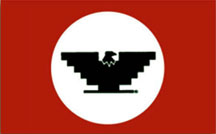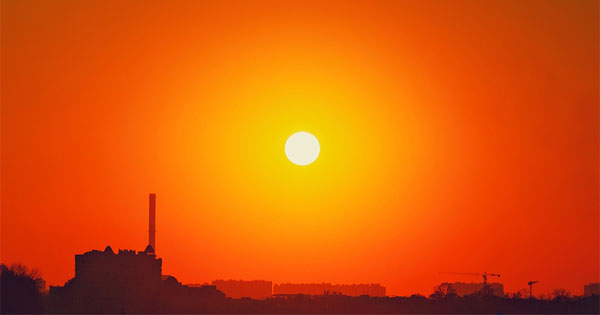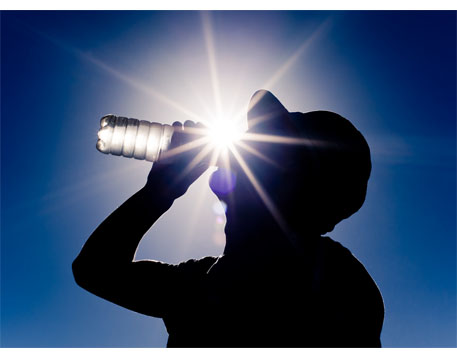STATE GOVERNMENT
UFW: Washington’s new heat protections are ‘strong’
TUMWATER, Wash. (June 6, 2022) — From June 15 through the end of September, employers in Washington will be required to monitor temperature and air quality, take additional steps to protect workers from heat and smoke hazards, and provide training and information, among other things.
On June 1, the Department of Labor & Industries (L&I) filed emergency outdoor heat exposure and wildfire smoke rules to protect farm and construction workers, roofers, road crews, and anyone else whose job keeps them outside. They are designed to help keep workers safe this summer as L&I continues to develop permanent rules to address the serious hazards posed by extreme heat and exposure to wildfire smoke.
“The record-setting heat wave last summer underscored the importance of protecting outdoor workers,” said Craig Blackwood, L&I’s assistant director for the Division of Occupational Safety & Health. “Add in the smoke from more frequent and devastating wildfires, which is a proven hazard, and it’s a recipe for danger every summer.”
 The United Farm Workers petitioned L&I to pass emergency heat rules this spring following the expiration of last year’s emergency rules, Elizabeth Strater, UFW director of strategic campaigns, told The Seattle Times. UFW volunteers who visited nearly 50 Yakima Valley worksites in August reported that work continued amid temperatures higher than 90 degrees and last year’s emergency rules, which went into effect at 100 degrees and may have been violated in some of those cases.
The United Farm Workers petitioned L&I to pass emergency heat rules this spring following the expiration of last year’s emergency rules, Elizabeth Strater, UFW director of strategic campaigns, told The Seattle Times. UFW volunteers who visited nearly 50 Yakima Valley worksites in August reported that work continued amid temperatures higher than 90 degrees and last year’s emergency rules, which went into effect at 100 degrees and may have been violated in some of those cases.
“When you have these rules that are set freakishly high, like 100 degrees, that is where you’re going to start seeing employers that are going to roll the dice,” Strater said. “These new rules are strong, so I’m hopeful.”

Outdoor heat exposure rules
When temperatures are at or above 89 degrees, the emergency heat rules combined with existing rules require employers to:
- Provide enough sufficiently cool water available for each employee to drink at least a quart an hour;
- Provide sufficient shade that is large enough for and close enough to workers;
- Encourage and allow workers to take paid preventative cool-down breaks as needed; and
- Require a 10-minute, paid cool-down break every two hours.
Existing rules already require ready access to at least one quart of drinking water per worker per hour, an outdoor heat exposure safety program with training, and an appropriate response to workers who are experiencing heat-related illness symptoms.
Depending on the type of clothing workers are wearing, the temperature at which the requirements kick in may be even lower. Employers can substitute other means of lowering body temperature for shade, like an air-conditioned trailer or a misting station.
Employers must monitor temperatures and have a system in place, like a mandatory buddy rule, regular check-in by phone or radio, or other effective method to catch signs of heat-related illness. If there are signs of illness, employers must relieve workers from duty, provide shade or other means of cooling down, and determine if additional medical attention is needed.
L&I’s Be Heat Smart web page has complete details of the requirements and additional steps employers and workers can take to prevent heat-related illnesses.
Chapter 296-62-095 Outdoor Heat Exposure Adoption Language
Chapter 296-307-097 Outdoor Heat Exposure (Agriculture) Adoption Language
WSR 22-12-095 Rulemaking Order
Wildfire Smoke Rules
Smoke from wildfires contains fine particles that can reach the deepest parts of the lungs, causing serious health problems. L&I’s emergency rule requires employers to monitor air quality and take action when outdoor workers are exposed to wildfire smoke and the Air Quality Index (AQI) is at 69 or higher.
When workers show signs of injury or illness related to smoke, employers must monitor those workers to determine if medical care is needed, and cannot prevent workers from seeking medical treatment.
If the AQI is at 69 or higher, employers are encouraged to limit their workers’ exposure to smoke by:
- Reducing, rescheduling, or relocating work;
- Providing enclosed buildings or vehicles where the air is filtered; and
- Reducing the work intensity or increasing rest periods.
At AQI 69 or higher, employers are encouraged to provide respirators at no cost to the workers, and workers can wear respiratory protection if they choose. At AQI 101, employers must provide respirators for voluntary use—an increase in protection from last year’s wildfire smoke rule.
Employees must be provided with and are required to wear more protective respirators when particulates from wildfire smoke are measured at 555 micrograms per cubic meter (μg/m3) or higher.
L&I also recommends employers take action to reduce employee exposure to dangerous air at even lower AQI levels, especially for sensitive groups including those with asthma or other lung conditions.
There are additional details available on the wildfire smoke rule’s requirements for employers on L&I’s website.
Chapter 296-62 Part I-3 Adoption Language
WSR 22-12-094 Rulemaking Order
Planning and worker training
 Employers are required to include wildfire smoke response and outdoor heat exposure in their written Accident Prevention Plan, and must train workers on the hazards, mitigation steps, and plans for responding to problems before they work in heat or wildfire smoke.
Employers are required to include wildfire smoke response and outdoor heat exposure in their written Accident Prevention Plan, and must train workers on the hazards, mitigation steps, and plans for responding to problems before they work in heat or wildfire smoke.
Developing permanent rules
L&I is developing permanent rules for both heat and wildfire smoke exposures, has presented research findings on health effects of smoke and heat to stakeholders, surveyed employers and employees on their experiences with the 2021 emergency rules, and is continuing to conduct stakeholder meetings to get input on draft language for the permanent rules.
For more information on the development of these rules please see the L&I Rulemaking Activity page.





